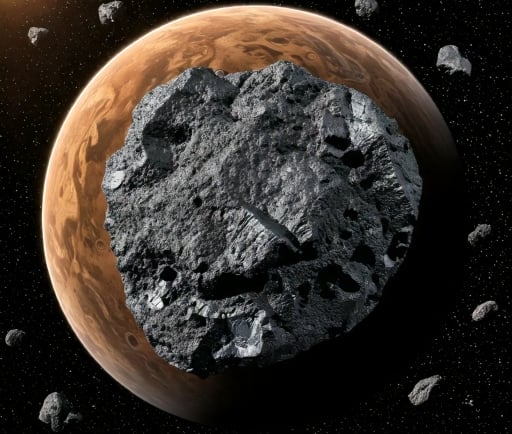The Role of Carbonaceous Chondrites in Exoplanet Composition


Introduction to Carbonaceous Chondrites
Carbonaceous chondrites are a unique class of meteorites that provide crucial insights into the primitive materials from which our Solar System formed. Understanding their composition helps us grasp the building blocks of planetary bodies, especially in the context of exoplanets—planets that orbit stars outside our Solar System. These meteorites contain organic compounds and water, making them of particular interest to astronomers and planetary scientists.
Significance of Carbonaceous Chondrites in Exoplanets
Carbonaceous chondrites play a significant role in the study of exoplanets. Their composition includes various elements and isotopes that can mirror the materials found in distant planetary systems. By analyzing these meteorites, scientists can make informed hypotheses about the conditions present on exoplanets and the potential for life. The organic matter within carbonaceous chondrites, for instance, raises captivating questions regarding the potential for biochemical processes on rocky worlds beyond our Solar System.
Implications for Astrobiology and Planetary Formation
The implications of studying carbonaceous chondrites extend into the realm of astrobiology, where researchers contemplate the origins of life. The rich chemistry present in these meteorites suggests that similar processes might occur on exoplanets that possess comparable physical conditions. Furthermore, the water content found within carbonaceous chondrites indicates that celestial bodies harboring these materials could also possess water, a critical ingredient for supporting life as we know it.
Moreover, as planetary systems evolve, the interaction between carbonaceous chondrites and other cosmic materials during the formation of planets can lead to diverse geological and atmospheric conditions. Investigating how these materials contribute to exoplanetary atmospheres helps scientists unravel the complex stories of how different planets develop. The carbonaceous chondrites serve as a galactic library, providing clues to not just our own planetary history but also to the myriad of worlds waiting to be studied across the cosmos.
In conclusion, the study of carbonaceous chondrites is vital for deepening our understanding of exoplanets and the potential for life beyond Earth. As we continue to detect and study new exoplanets—many of which could be similar in composition to our own—we enhance our knowledge of the universe's diversity. This ongoing research not only illuminates the conditions necessary for planet formation but also addresses the profound questions regarding the existence of life elsewhere in our vast universe.
